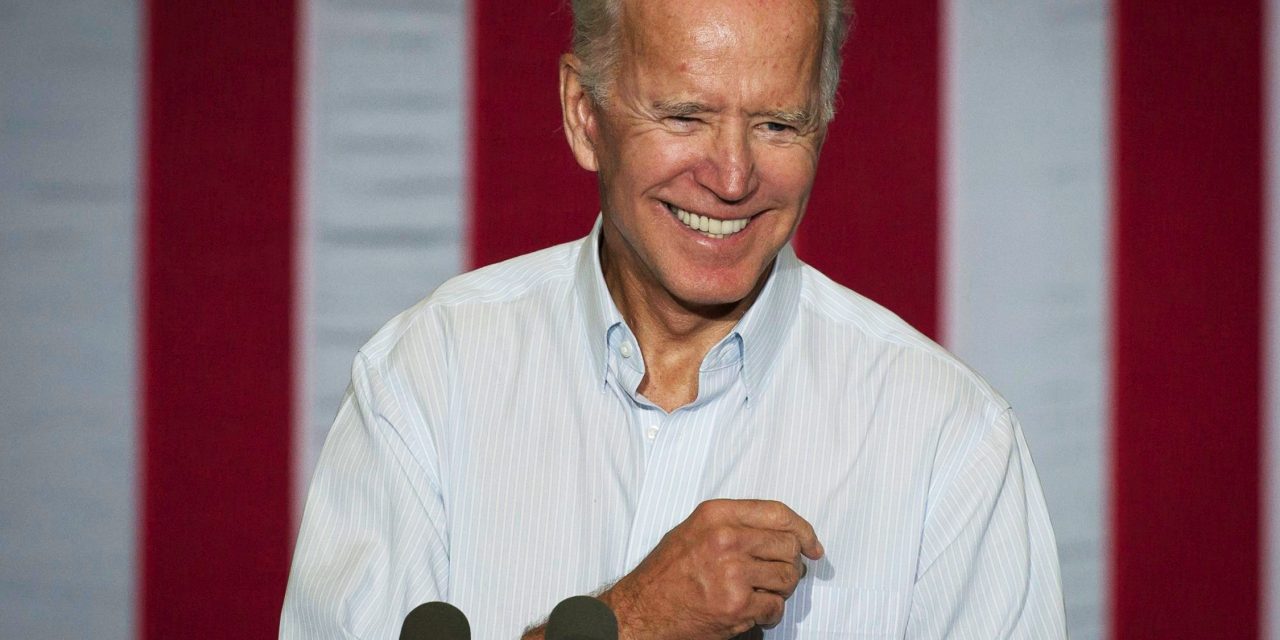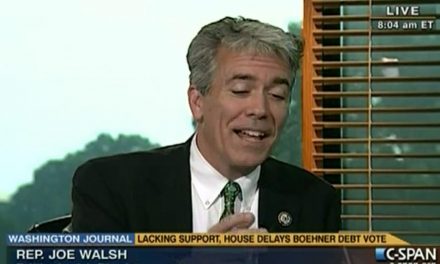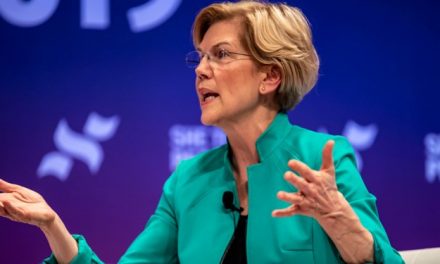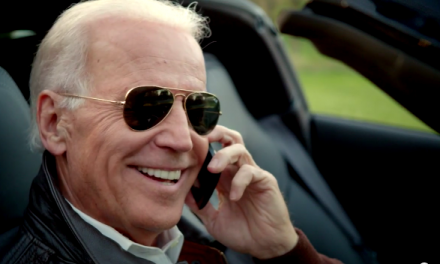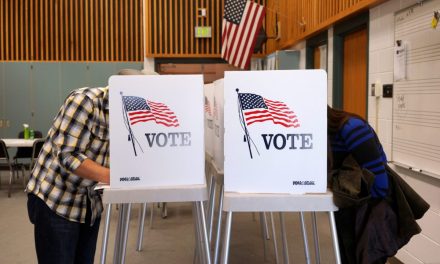Image Credits: Bryan Woolston/Shutterstock.
It’s doubtful too many people are surprised that former vice-president Joe Biden has enjoyed a bump in the polls after formally entering the contest for the Democratic Party’s presidential nomination. But a deeper look into the cross-tabs may upset preconceptions about his base of support.
Biden is widely portrayed as a moderate or centrist candidate who has a less than stellar record on racial issues (school busing, Anita Hill, War on Drugs, crime bill) and a natural appeal to the hardhat, white working class voters the party needs to win back from Trump. He’s supposed to represent the party of the past and have little appeal to the younger generations.
You can pick up traces of some of that narrative in the data, but there’s a clear error on race. Biden is the overwhelming first choice of people of color. The candidate who seems to be struggling with brown and black folks is South Bend, Indiana mayor Pete Buttigieg.
Among whites:
Biden 29%
Sanders 15%
Buttigieg 10%
Warren 8%
Harris 6%
O’Rourke 6%Among non-whites:
Biden 50%
Sanders 14%
Warren 7%
Harris 4%
O’Rourke 4%
Buttigieg 3%
Harry Enten of CNN notes that “a majority of Democrats are over the age of 50, at least 50% of Democrats call themselves moderate or conservative and a majority lack a college degree.” This is supposed to be Biden’s sweet spot, and it’s true that he does extremely well in these demographics. On the other hand, he does pretty well outside of them, too.
Age: Biden’s up 30% to 19% over Sanders among Democrats under the age of 50. Among those age 50 and older, Biden holds an astounding 48% to 11% over Sanders. That is, his lead more than triples among older voters.
Ideology: Biden and Sanders are about even among those who call themselves “very liberal.” Biden though gains support as you go from left to right in the party. He holds an over 30 point advantage among moderate and conservative Democrats.
Education: Biden is up just 11 points among Democrats with a college degree. That climbs to 32 points among those without a college degree. (Note too this occurs on a continuous scale. Biden is weakest among postgraduates and strongest among those who never even attending college, let alone graduated from it.)
The top three in CNN‘s poll are Biden at 39 percent, Bernie Sanders at 15 percent, and Elizabeth Warren at 8 percent. Biden’s lead would not be so robust were he not breaking even with Sanders among the party’s most liberal voters. He’s actually leading Sanders among Democrats who have a college degree.
It’s accurate to say that Biden’s support weakens as we move left on the educational attainment, ideological, and age scales (younger voters are more liberal), but he is doing well enough in every demographic to dispel the notion that he has any major weaknesses within the party at all.
For pundits and analysts who are gaming out how the primaries are likely to go, there has long been a supposition that Biden is currently enjoying a name recognition advantage that is inflating his poll numbers. That’s almost certainly true. At the moment, he’s also benefiting from a post-announcement bounce. But the premise that often follows is that his support will collapse once his record is closely examined and other candidates get a chance to capture the voters’ attention.
I have no doubt that the current number will not hold up. It’s highly unlikely that Biden will best his nearest competitor by 24 points and capture nearly 40 percent of the overall vote. Yet, his opponents cannot be encouraged after looking at the breadth of his support. He’s strongest among older voters who always have the best turnout rates. The character of his support is not ideologically determined (or, only weakly so), as he does best among both the white working class and people of color.
Bernie Sanders has to be disappointed that he is not currently enjoying any advantage over Biden with the party’s most liberal voters. These are the voters most likely to move away from Biden for ideological reasons, and they represent the only real hint of weakness for Biden in these polls. Highly-educated white liberals have an outsized voice in our political debates, but they aren’t numerically significant enough to carry a candidate across the finish line. Biden’s rivals will have to eat into his areas of strength if they want to stop him, and they’re not going to do it with the kinds of attacks we’ve been seeing online.
Biden’s final advantage is that the people who don’t like him have so many alternatives. He may be at his high-water mark in the polls at the moment, and over 60 percent of votes may prefer someone else or have no opinion, but unless someone emerges quickly to capture and consolidate the non-Biden vote, he has a long way to fall before he needs to be concerned.
This isn’t the shape of the race we’re seeing described in the media. Charles Blow of the New York Times has a problem with how the contest is being portrayed too, but he doesn’t question the basic accuracy of the assumption that Biden’s appeal is based on his potential as a white working class champion:
…there is part of the Biden enthusiasm, and to a lesser extent the energy around candidates like Bernie Sanders, that focuses too heavily on the fickle white, working-class swing voters and is not enough focused on the party’s faithful.
Indeed, in political circles, Biden’s chief attribute in this election feels like his apparent appeal to these white voters.I think that we need to question why the presence of the white male elder seems to ease anxiety among these white voters, and why the Democrats seem to be banking on that.
He argues that supporting Biden is a way of treating white working class voters as “white buffaloes — sacred entities,” and complains that that basis of his appeal stems from “Democrats (who) want to hold constant their support from women and minorities even as they chase the votes of people hostile to the interests of women and minorities.”
No doubt, some people are leaning toward Biden for these reasons, but the assumptions are flawed. Biden doesn’t need to “chase” the support of minorities because he’s currently leading Sanders 50 percent to 14 percent among non-white Democrats. If you’re looking for the candidate who excites “the party’s faithful,” he’s easy to find. The real basis for Biden’s appeal is that he comes closest (at the moment) to uniting all the party’s factions across its ideological and racial lines, and that he is very strong in the middle where at least some undecided voters are available for poaching.
Every time I write about how formidable Biden is as a candidate, I am accused of supporting him. That’s not why I keep harping on this subject. I want to correct a bad narrative. There’s an enormous disconnect between what people think of Biden’s political base and his actual political base. This is also true, to a lesser degree, for Bernie Sanders. If people don’t understand where they’re likely to get their votes, then they’re not going to do a good job of telling you what’s likely to happen once people start voting.

